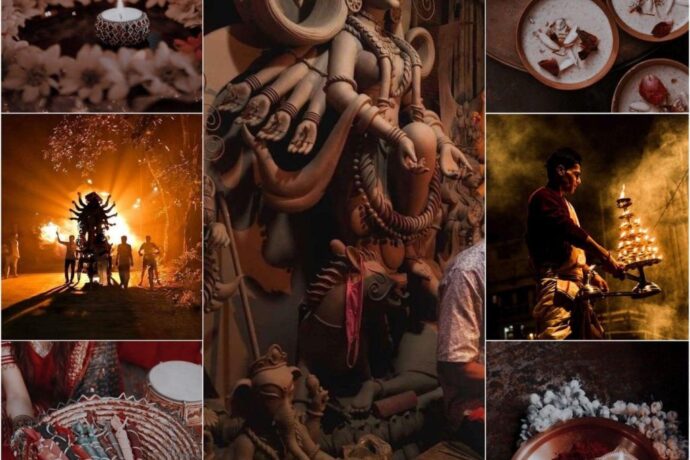Curator Lavina Baldota talks about her tryst with Indian textiles, the inspiration behind Sutr Santati, and every little thing in between.
Embroidered tapestry by Chanakya School of Craft. Image: Courtesy Sutr Santati.
Celebrating 75 years of Independence, galleries throughout the nation determined to revisit India’s creative heritage and timeless craftsmanship by stunning interpretations. A primary-of-its-type exhibition, Sutr Santati represents over 100 conventional Indian textiles by near 75 contributors, and highlights the varied interpretations of lovely textile craftsmanship of India, designed to foster Indian delight.
Scheduled to launch on August 18, 2022 at National Museum Delhi, Sutr Santati will later journey to varied Indian and worldwide museums all year long taking the providing of Indian heritage textiles globally.
Lavina Baldota, a curator, textiles revivalist, and conservationist, offered the primary of Santati exhibitions titled Santati Mahatma Gandhi: Then Now Next in 2018-19, and marked the 150th delivery anniversary of Mahatma Gandhi, paying homage to his progressive views on sustainability and round industries by textiles, style and design.
In a dialog with TravelDine, Baldota sheds mild on what this textiles exhibition is de facto about, what to anticipate from it, and why precisely it’s of utmost significance to protect the heritage textiles of India in any respect prices.
 Lavina Baldota is a outstanding curator and conservationist. Image: Courtesy Sutr Santati.
Lavina Baldota is a outstanding curator and conservationist. Image: Courtesy Sutr Santati.
What’s the concept behind Sutr Santati? What impressed you to curate this exhibition?
Sutr Santati was conceptualised to have a good time 75 years of Indian independence, Azadi ka Amrit Mahotsav by the continuum of our textile heritage. During the pandemic, many weavers and craftspeople acquired a serious setback. I felt that for them to maintain a whole lot of consciousness needed to be created amongst the designers and the shoppers. Only if there’s commerce, the crafts will survive. Sutr Santati is an endeavour to deliver to the forefront a number of individuals working within the area of textiles whether or not they’re weavers, artisans, designers, artists, printers, dyers, organisations, and even college students from design institutes.
The exhibition will deliver collectively numerous textile traditions of the nation, conceived and created by a few of its most outstanding artisans, craftspeople, designers, and artists. In the specifically commissioned materials offered right here, they view the themes, strategies, and supplies used by the lens of innovation. In doing so, they reinforce the worth of material — an necessary legacy of Indian nationalism — to outline the nation’s up to date creative panorama, and to push its creativity into the long run.
 Naga Chair by Ashiesh Shah. Image: Courtesy Sutr Santati.
Naga Chair by Ashiesh Shah. Image: Courtesy Sutr Santati.
The exhibition is launching quickly. What can your visitor anticipate?
Sutr Santati has round 100 textiles from throughout India. It is a repository of Indian textile traditions practiced at the moment. On view are textiles created with the processes of hand weaving, embroidery, resist-dyeing, printing, portray, and appliqué, amongst different types of yarn and cloth manipulation. The displays are created utilizing pure indigenous yarns in addition to pure and azo-free dyes. The fibers employed in these commissions vary from native varieties similar to Kandu and Kala cotton, mulberry and wild silks, camel and sheep wool, goat and yak hair.
As a conservationist, how essential it’s, in your opinion, to revive or protect heritage crafts by native artisans?
It is our duty to protect this heritage for our future. It is a two prong course of: One is to create consciousness and appreciation for the crafts, different is to current alternative and dignity for our craftspeople. We additionally should make our crafts related for international use. Sustainability and the round economic system have been cornerstones of Sutr Santati. By utilizing indigenous yarns, we’re supporting the farmers. We are creating consciousness amongst the designers to have interaction in utilizing Indian materials and work with the crafts individuals to create one’s personal design language.
The use of pure yarns and dyes is one other step in direction of decreasing the air pollution that the textile business is thought to trigger within the surroundings. Going again to conventional practices was a problem however we have been in a position to push boundaries. For occasion, in Telangana, we revived an outdated ‘Telia Rumal’ design, which has 99 completely different motifs completed in ikat utilizing handspun cotton yarn!
 Tagore Poetry in Batik by Kartik Manna from the Label Shunya. Image: Courtesy Sutr Santati.
Tagore Poetry in Batik by Kartik Manna from the Label Shunya. Image: Courtesy Sutr Santati.
Where will Sutr Santati be touring within the coming months, aside from New Delhi?
The instant plan is to exhibit subsequent in Baroda, adopted by Mumbai. We are additionally doing a digital exhibition for a wider attain.
Which three are your private favorites relating to Indian textiles?
Ikat, muslin Jamdani, and Kota doria are amongst my prime favourite weaves. I additionally love ajrakh prints, and embroidery chikankari is my private favourite.
Best spots to purchase genuine Indian textiles in Delhi and round India.
Shops like Kamala of Delhi Crafts Council, Vaya, La affaire, Raw Mango, Good Earth, and state emporiums. There are additionally many on-line web sites like Okhai, Go Coop, Jaypore, Taneira, and Aadyam that you would be able to try. It is at all times the perfect to first discover out concerning the ‘what, how, where, and who’ made it, before you purchase.
Read extra.
Weaving a brand new future for India’s heritage handlooms
10 should-go to museums in India









